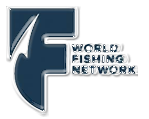ANGLING INSIGHT BORN OF EXPERIENCE
Time on the Water Leads to Strategic Thinking
By CAPT. BILL MILLER
When you spend much of your life on the water, you develop an insight that comes from experience. You see how fish respond to various combinations of elements and you figure out how to make the most of the opportunities you encounter. Through my many years spent fishing the waters of west central Florida, I have picked up several tips on how to leverage the natural tendencies of the various species in our local waters.
I’d like to share some of these tips from my book “FISH SMART – CATCH MORE!”
FISHING THE SIDELINES
Sea walls are always a good bet for snook, trout and redfish because the predators can pin finger mullet and other baitfish against the solid boundary just like a cornerback running a receiver across the sideline. Early mornings and late afternoons are traditionally the best times to target seawalls. This is because low light conditions reduce visibility so predators can be more easily fooled with artificials. However, anytime you’re running near a seawall, keep watch for fish busting bait or any other sign of feeding activity. Be especially observant around bridges, where water funneling past pilings stacks baitfish along nearby sea walls. Target subtle changes or breaks in a sea wall and cast as close to the structure as possible. Very often, you’ll get bit the moment your bait hits the water.
DEAD BAIT SNOOK
When snook turn finicky toward live baits, you don’t necessarily have to close up shop and move to another location. Sometimes, a slow tide just lowers the fish’s interest in fast-moving baitfish. The snook may still eat, but they’re just lazy about it. This is when a dead minnow can work wonders. When baitfish die in the well or on your hook, save them and reuse them during slow tidal periods. Cast the bait into potholes where the snook can easily spot it and let the bait sit perfectly still. In this scenario, snook will shy away from any movement, so just wait for the line to tighten and then reel down and set the hook.
WINTER “SLOW” RIG
The key to presenting cold season baits is to do it slowly. Most inshore fish such as snook turn from their active predatory nature during the warmer months to lethargic scavengers when winter chills the water. Shrimp are great winter bait, but they tend to flip away when they see a gamefish looking at them. Ideally, you want the bait to pass right by a cold fish’s face to attract any interest. You can do this by hooking a shrimp under the horn on its head with a ¼-ounce jig. This allows you to sink your bait to the bottom and crawl it across the spot you’re fishing. The jighead ensures that your bait tracks straight in the water so you can make targeted presentations to where you think the fish are holding.
DEEP AND DARK
When winter ushers baitfish schools out of the area, trout, redfish and other predators turn their attention mostly toward crustaceans and invertebrates. Anglers targeting the sandy potholes scattered throughout grass beds will do best with dark colored soft plastics that imitate a crab, shrimp or slug crawling across the bottom. Colors such as root beer, pumpkinseed and motor oil are good choices here. The idea is to present a silhouette rather than a flashy profile like that of a warm season baitfish. Light jig heads or hooks with weighted shanks are best for reaching the bottom with the least disturbance. Because winter fish are usually less active, you may need to enhance the lure’s attraction by sticking thumbnail size chunks of fresh shrimp on the tip of the hook. The added scent helps attract fish and the taste makes them hold on longer. For larger fish, add a bigger piece of shrimp, but work the jig slower, because the increased weight will affect the action.

























